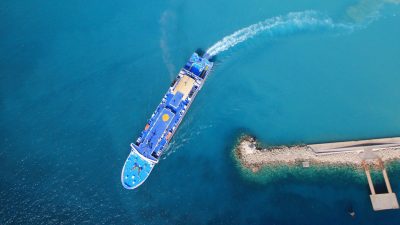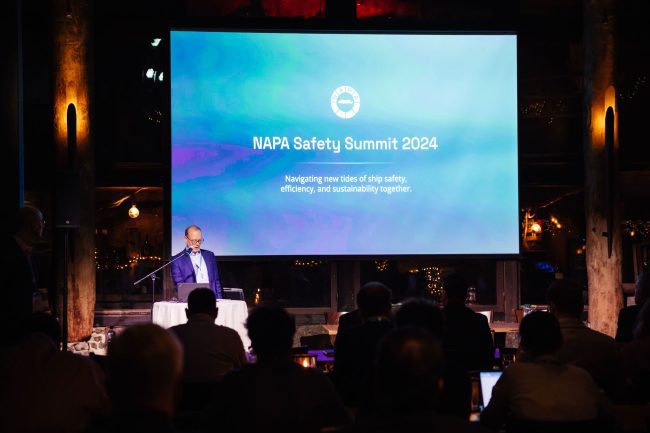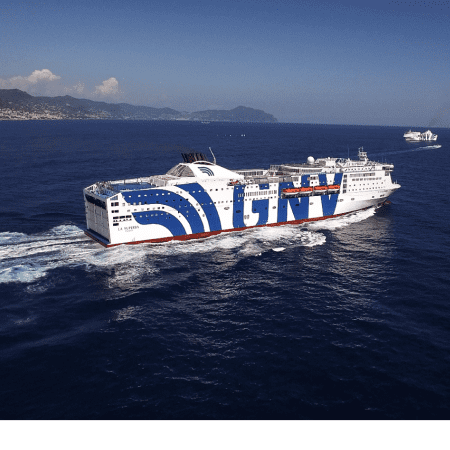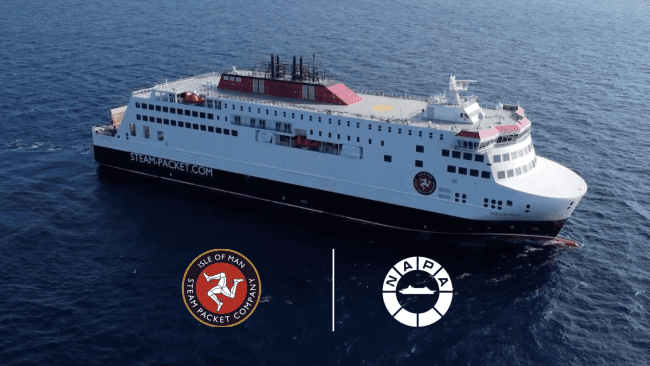NAPA Loading Computer Type 4 awarded DNV GL type approval in industry first
Approval of the NAPA Loading Computer Type 4 and LCS(DC) furthers the adoption of next-generation loading computers, which assess damage in real-time with increased accuracy, enhancing industry safety standards
Helsinki, Finland – 15 October, 2020 – NAPA, the leading maritime software, services, and data analysis provider, has announced that it has been awarded type approval by DNV GL for its latest loading computer, the NAPA Loading Computer Type 4 and Loading Computer System Damage Control, LCS(DC). The type approval, which is the first of its kind to be awarded by DNV GL, is significant in enabling further adoption of a new generation of loading computers, which assess damage in real-time with increased accuracy, allowing the crew to make essential decisions on ship stability.
The Type 4 Loading Computer marks a significant shift in operational safety, most notably for passenger vessels. Since the start of 2020, under new IMO requirements, all passenger-carrying newbuild vessels will be compliant if a Type 4 Loading Computer is installed. Likewise, passenger ships constructed before 1 January 2014 must also comply with this requirement no later than the first renewal survey after 1 January 2025. To ensure the highest industry safety standards are reached, and to futureproof vessels in line with regulation, NAPA will also now only deliver Type 4-compliant software.
Additionally, NAPA was awarded type approval for the functionality required by the advanced DNV GL class notation LCS(DC). This further reflects NAPA’s leadership role in setting a new standard of passenger vessel safety beyond that of the basic regulation. The LCS(DC) feature provides additional functionalities, including automatic flooding detection by sensors, that assist the master as a decision aid when the ship has been subjected to damage and consequent flooding.
The Loading Computer software includes an advanced calculation of damage stability associated with an actual loading condition and/or actual flooding cases, using the direct application of user or sensor defined damage to enable a safe return to port (SRtP). Although this has been a capability of the NAPA Loading Computer software for some time, the integration of such sophisticated damage stability features in-class approval reflects a new frontier for safety requirements at sea.
The NAPA Loading Computer Type 4 also includes updates to a vessel’s automatic damage detection and incorporates the status of watertight doors, cross flooding, and escape routes into its modelling. NAPA Loading Computer Type 4 is Safe Return to Port (SRtP) and IACS Type 4 compliant and complies with all relevant IMO Circulars.
Since its launch in 1993, NAPA Loading Computer has become the industry benchmark for integrated decision support, with the software currently installed on over 2,000 ships across the global commercial and passenger fleet. The ship stability solution is used by nearly all the major cruise lines, such as Kvarken Link, Windstar Cruises, and all nine Carnival Cruise line brands, as well as the ferry, RoRo, RoPax, StoRo, and LoLo operators.
The software undertakes a wide range of calculations related to hydrostatics, intact stability, and ship longitudinal strength to optimise vessel load while minimising stress and safety risk. It is this leading expertise in ship stability and decades of knowledge in enhancing passenger ship safety that underpins the company’s safety solutions, with 90% of newbuild vessels worldwide built-in yards that use NAPA design software.
Jussi Siltanen, NAPA Safety Solutions Senior Product Manager commented: “We are proud to be the first to have been awarded DNV GL type approval for our Type 4 Loading Computer and LCS(DC). The type of approval not only demonstrates how the combination of live data and ship stability expertise can radically improve operational safety but reaffirms our position as leaders in this field. While we previously had to rely on pre-programmed scenarios to assess intact and damage stability, we can now more accurately assess stability based on real-time conditions. This provides the crew with more precise information that they can use to keep their vessels and passengers safe.”
Inge Seglem, DNV GL Head of Section Stability, Load Line & Tonnage, said: “At DNV GL we take pride in evolving safety standards in the passenger ship sector, and beyond, and are pleased to award NAPA type approval for its pioneering safety software. The ability for the crew to make smarter, better-informed decisions is what keeps ships, crew, passengers, and cargo safe. In light of this, NAPA achieving type approval for the DNV GL optional LCS(DC) class notion, a standard set to further evolve safety in the sector, will serve as a benchmark in the industry for passenger ship safety”.
***

About NAPA
In its over 30 years of operation, NAPA has become a global leader in software, services, and data analysis for the maritime industry; providing best-in-class data-led solutions for safety, efficiency, and productivity in both ship design and operations.
NAPA operates globally, with 11 offices across Asia, Europe, and the Americas supported by its Helsinki headquarters. To date, NAPA has 420 user organizations for its design solutions and nearly 3,000 installations onboard vessels. For more information, visit https://www.napa.fi
About DNV GL
We are an independent expert in risk management and quality assurance. Driven by our purpose, to safeguard life, property, and the environment, we empower our customers and their stakeholders with facts and reliable insights so that critical decisions can be made with confidence. As a trusted voice for many of the world’s most successful organizations, we use our knowledge to advance safety and performance, set industry benchmarks, and inspire and invent solutions to tackle global transformations.
About DNV GL – Maritime
DNV GL is the world’s leading classification society and a recognized advisor for the maritime industry. We enhance the safety, quality, energy efficiency, and environmental performance of the global shipping industry – across all vessel types and offshore structures. We invest heavily in research and development to find solutions, together with the industry, that addresses strategic, operational, or regulatory challenges. For more information visit https://www.dnvgl.com/maritime
Media enquiries
Georgia Bailey
BLUE Communications
T: +44 1865 514 214
E: Georgia.Bailey@Blue-Comms.com
Chalotte Bjørn
DNV GL – Maritime, Region North Europe
T : +47 976 449 34
E : Chalotte.Bjorn@dnvgl.com


